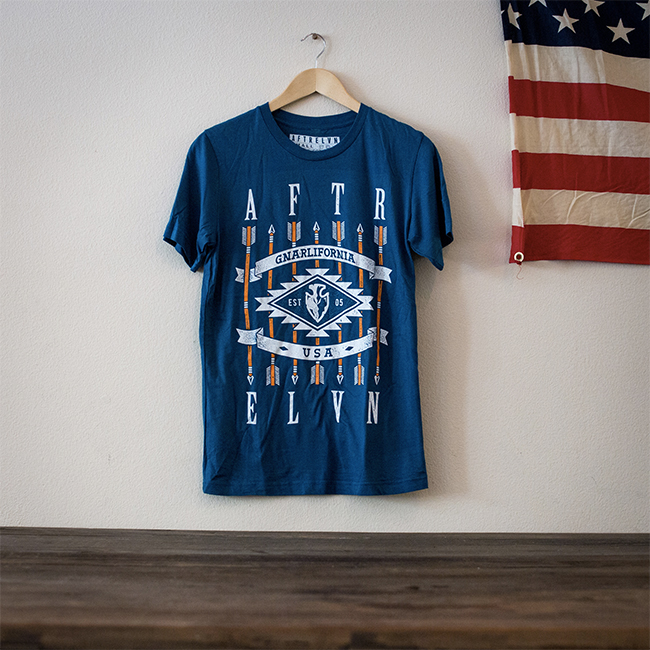4 Steps to Focus your Product Assortment for Success
Merchandising: It’s more than just selling pretty things.
It’s the practice of having the right products, in the right place, at the right time, for the right customers. It’s having a focused assortment strategy that helps you carve out a clear position in today’s saturated e-commerce market. When done effectively, a focused merchandising strategy has the power to fuel your business’s growth.
As a small business, you may think merchandising effectively is out of your reach. Not so! You can easily leverage a strategically focused product assortment to maximize your success in just four simple steps.
Step #1: Find your target market and target customer.
It’s time to do a little homework in the form of some ‘market research’. Don’t let that fancy term fool you, though—all we’re doing is helping you define your specific market and target customer (i.e., the people you’re trying to sell to) by identifying voids you can serve with your product assortment. This will help you have a better understanding of the type of products you might want to offer, as well as bring to light new ways to market your business. Market research typically consists of these elements and related activities:
Competitive analysis.
Visit competitors’ websites, and other magazines and blogs then answer these questions:
- What can I offer that my competition isn’t ?
- Is there a market for my products?
- Who are my competitor’s customers?
- What products do my competitors offer?
- What’s their pricing like?
- How do all of these questions match up with your own audience, offering, pricing, and so on? When you’ve answered those questions, strategically position your assortment to serve customers that your competitors aren’t effectively serving.
Customer development/feedback.
Ask potential and current customers what their buying habits are, what kinds of products they want, and if your current assortment is fulfilling their needs.
- Use interviews, questionnaires, surveys and focus groups to gather insights.
- Avoid friends who might have biased feedback
- Broaden your search by asking your initial round of individuals for others who might be interested in answering a few questions.
Morgan Gore from After Eleven Apparel utilized market research to find a void in the surf apparel industry, here’s how:
“At the time, the surf industry was dominated by a handful of major companies. Most graphic tees were just stamped with a logo – very cut and dry. So, I saw an opportunity to create a different style of designs that were more art-driven.”
– Morgan Gore, After Eleven Apparel
Step #2: Differentiate your product offering and STAND OUT.
Through your market research you’ve been able to identify your target market and target customer. Now you need to offer products that your customers will perceive as being different enough to fulfill their specific needs.
Here are a few assortment differentiation strategies to consider that won’t leave you competing on price alone.
-
- Exclusivity
- Product quality
- Variety
- Customization
- Unique
- Trend
The brand Lost Kind does a great job of differentiating based on product quality. Here’s an example of how they articulate that difference:
“We use materials that would stand the test of time and are made from sustainable sources. The leather we use is 100% vegetable-tanned and a meat industry byproduct. It took us well over a year to find the leather supplier that conformed to the same standards that we wanted for us it was worth the search.”
Step #3: Edit your offering, or, When more isn’t necessarily merrier.
Typically, customers will shop for one or two specific things from a store and ignore the rest of the offering. What does that mean for you? Editing your assortment and only offering products that meet your core customers’ needs will help you run a more profitable business.
How so?
It reduces inventory cost: Those 15 additional products you carry that you’ll never sell might be killing your profitability. With each product you carry, there is associated cost for stocking, producing, and marketing, so optimizing your assortment to only carry the products that drive you the majority of revenue will keep your costs low and your overall operating profits much healthier.
Losing the products that don’t interest your core customer also creates a better shopping experience. After all, customers live busy lives these days, and they’ve got tons of options when it comes to online retailers—they want a streamlined, intuitive shopping experience that makes it extremely easy for them to find exactly what they want, and direct them to the categories you consider your strongest. By eliminating those underperforming categories and products, you foster a frictionless experience that results in higher conversion rates.
So, where should you start editing? Here are some ideas to get you started:
-
- Eliminate low value categories.
- Analyze size and color sales then reduce low performing choices.
- Optimize assortment around key price points. You don’t have to serve every market.
Step #4: Test, learn, and invest.
Your assortment should evolve over-time. Consumer trends are changing more rapidly than ever, and your assortment needs to change with your customers’ needs. Pay attention to what your customers are asking for and what trends you’re seeing evolve in your market, or you run the risk of having a dated and obsolete assortment.
Keep in mind that gut feelings don’t work 100% of the time. Never invest too much of your inventory into a new trend or concept without testing first. Start this process by allocating a small portion of your inventory resources to testing out emerging trends that are relevant to your customers. If you find customers responding well to your test, lean into it, and invest more in the trend. Shift inventory away from product categories that have slowed sales and into trending product categories.
Successful merchandising is within your reach
A little homework goes a long way towards creating the most compelling product assortment. In the end, you’ve got to select the right mix, and visual appeal is just one part of that. The other part consists of evaluating the market and identifying the role you play in it. With time and attention to these things, you’ll create a successful product assortment.






